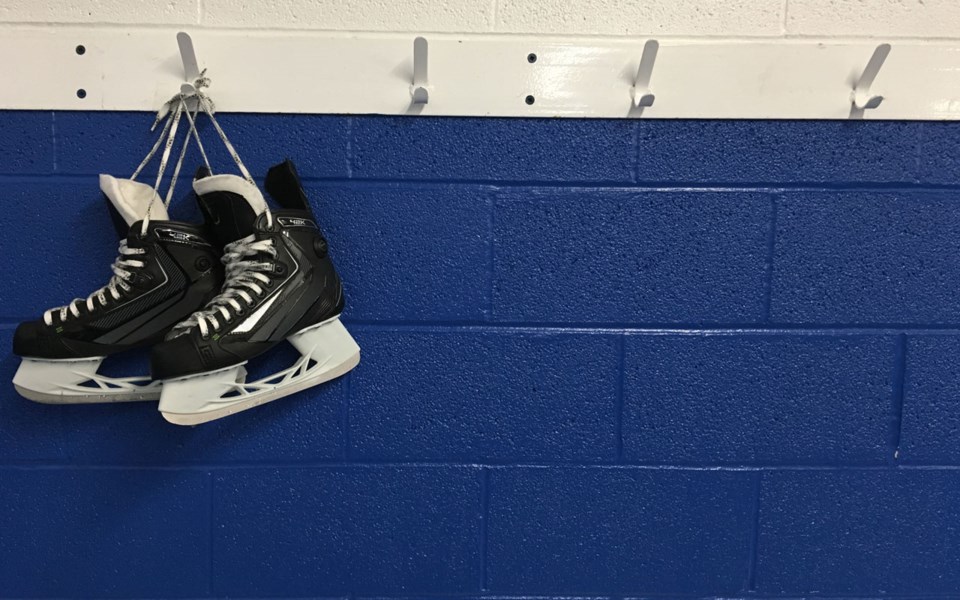And then it was over. A million Leafs fans responded by ripping off their jerseys, throwing them to the ground, grinding them into the carpet and walking away disgusted… only to creep back a moment later to pick up their crumpled, tear-stained blue and whites, and carefully fold them before sliding them back into the drawer.
“Next year,” they said, because that’s what they’ve always said, year after year after year. Deep down, they no longer believe it. Not really. But nobody wants to be the faithless guy who turned their back after a lifetime of supporting the team the year before it finally won the Stanley Cup.
The last time the Leafs lifted the Cup was 1967, the year The Beatles released Sergeant Pepper’s Lonely Hearts Club Band. Babies born nine months after that celebration are turning 53 years old.
Being a Leafs fan is nothing short of a burden. It’s the stone we start pushing up the hill every October only to watch it roll down the other side in early May, crushing our hopes, dreams and a probably few innocent puppies as it goes. It’s a love-hate relationship we’re powerless to break off.
But while Toronto fans may be hopeless, you could say the same about other Canadian teams as well. No Canadian has hoisted the Stanley Cup since the Montreal Canadiens in 1993. That should be statistically impossible. There are seven Canadian teams out of 31 in the NHL, which means—all things being equal—a Canadian team should win a Cup every four or five years. There have been some great attempts but we’ve always fallen short.
The question is why.
Some believe it has to do with taxes, and the fact that players are quietly moving to states where they get to keep more of their income.
Some blame the exchange rate, which plummeted in the ‘90s and had a major impact on Canadian teams that had to pay their players with American dollars, thereby robbing Canada of a decade of Cup-winning opportunities.
Some believe it has to do with the Canadian hockey standard, and the fact we’re still playing a crowd-pleasing physical style of rock’em, sock’em hockey in an era where speed and skill matter more at the end of the day—although I’d argue that it’s been a long time since a Canadian team could claim to be the league’s toughest.
There are also those who believe there’s a plot against Canada by the NHL, and commissioner Gary Bettman and the refs are somehow in cahoots. The fact that Nashville, Vegas and now Seattle got a franchise before Quebec City is held up as proof of the league’s American bias.
And then there are those who blame Canadian media and hockey fans for their overinflated expectations and impatience. Teams, under pressure from their fans, focus all their energy on making the playoffs every year instead of taking the time to build the depth that it takes to get past the first round. There are people who believe disgruntled fans should turn their backs on their teams and stop buying tickets and jerseys, because, the theory goes, depriving teams of revenue will teach them a valuable lesson about sucking less.
While a lot of these theories have merit—I’m watching you, Bettman—I personally think the problem is the league’s salary cap, which punishes success and renders fan support—something Canadian teams have—irrelevant.
While the cap helped expansion teams catch up by building fan support and winning an American network contract, it also makes it hard to build and keep together a winning team. The draft, injuries, free agency, and other factors play as much of a role as experienced leadership. It creates a situation where a new team like the Vegas Golden Knights can go to the Stanley Cup Final in its very first season.
The 2020 cap was $81.5 million, which is nothing for teams that are earning more than a billion dollars in annual revenues. For high earners like Montreal, Toronto and New York, player salaries account for a miniscule 1/18th of earnings.
Every team can afford that—especially with the league still skimming six per cent of total revenues away from the top earning teams and giving it to the lower earning clubs.
That $81.5 million has to cover an entire active roster of 23 to 25 players, plus the contracts of players that have moved on to other teams while still under contract. For example, goalie Roberto Luongo hasn’t played a game for the Canucks since 2014 but still accounted for $5.3 million of their cap space this year.
I would argue that the cap has accomplished its goal of bringing parity to the league and needs to be replaced by a luxury tax, similar to the NBA. In basketball, teams can go over the cap if they need to, but for every million they go over, they pay $500,000 back to lower revenue teams.
With a luxury tax, high-earning teams will get to keep their stars and build enough depth to contend for championships. Players will get also bigger share of revenues and, most importantly, fan support plays a direct role in the success of their team.
Fan support should matter at the end of the day. The stubborn, senseless loyalty of Leafs fans should matter. Until then, it’s always going to be “next year.”




